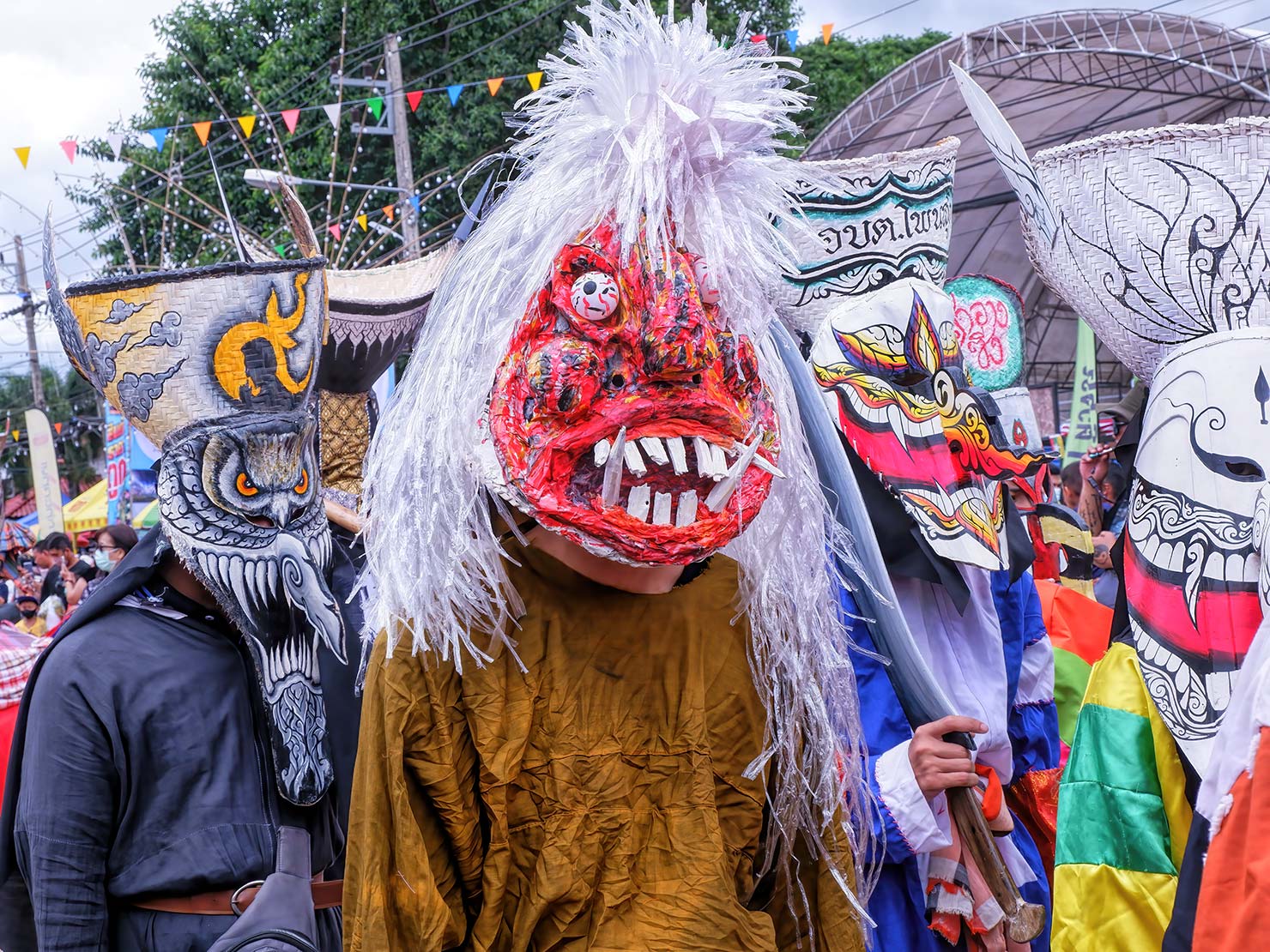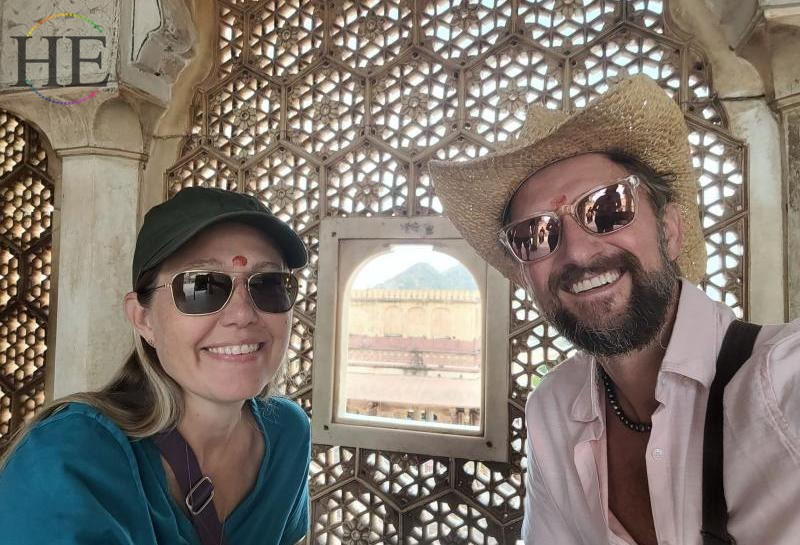Picture thousands of people dressed up as monsters, roaming the streets of a tiny village in northeastern Thailand. Giant ears, huge hooked noses, and foot-long spiked teeth sprout from their masks. Their chin-to-toe costumes are sewn from scraps of cloth into a kaleidoscopic patchwork of colors. Many carry wooden truncheons shaped into phallic symbols. Others brandish mock swords. Strings of bells or tin cans hanging from their belts add to the cacophony. Whenever anyone raises a camera, the costumed characters stop and strike an evil, threatening pose. This is Phi ta Khon, a festival held once a year in Thailand’s northeastern province of Loei.
Though it might sound slightly threatening, it’s all in good fun. Phi ta Khon, which some call “Thailand’s answer to Halloween,” is part of the larger Bun Luang Buddhist merit-making holiday. The origins of festival are murky. Some say the events were originally meant to invite protection from Phra Upakut, the spirit of the Mun river. Others point to the legend penned in the great epic, Mahachat Khamluang: The Great Birth of Lord Buddha. It tells the tale of King Sanjaya, who sent his son, Prince Vessandorn, into exile as punishment for giving away the kingdom’s revered white elephant.
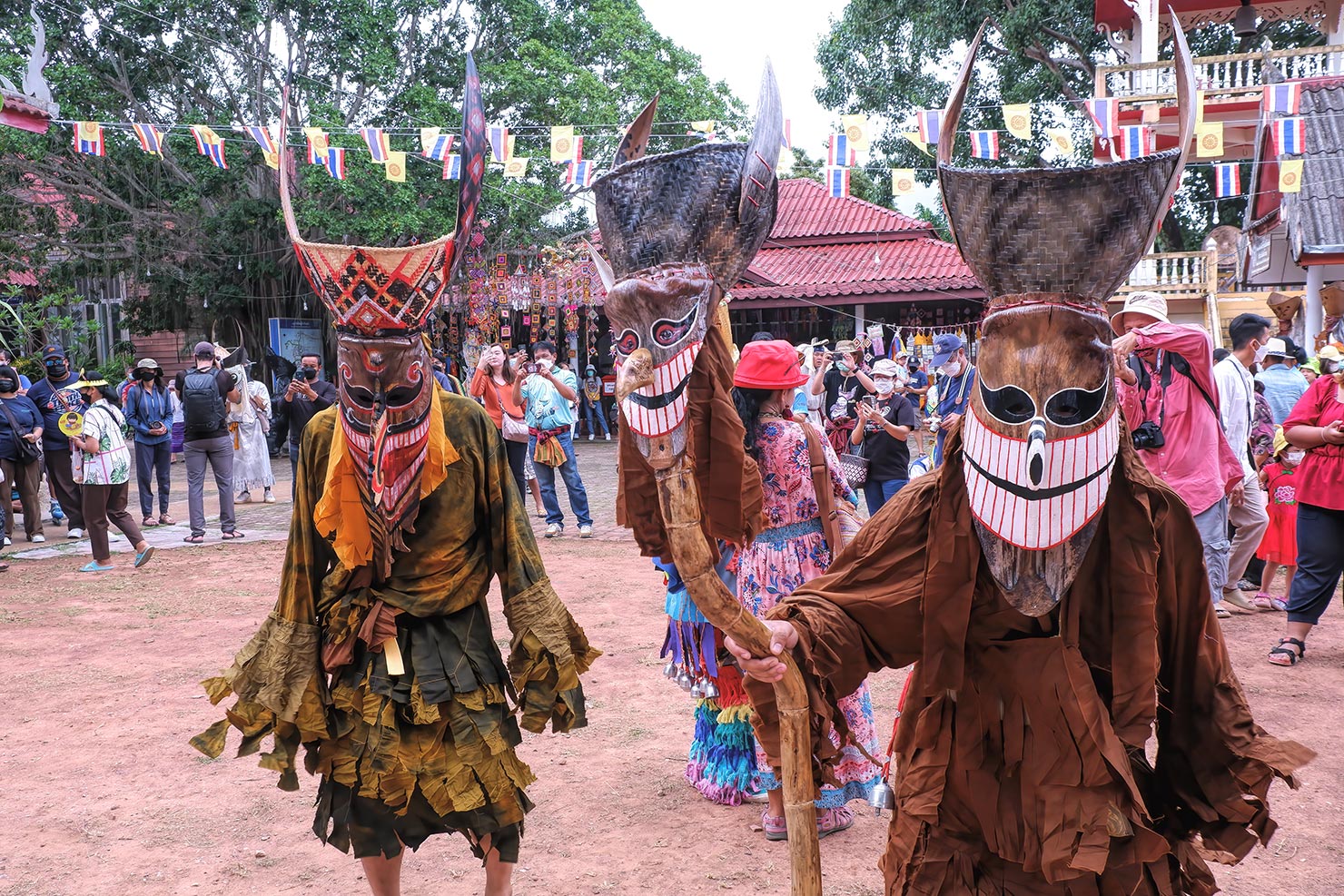
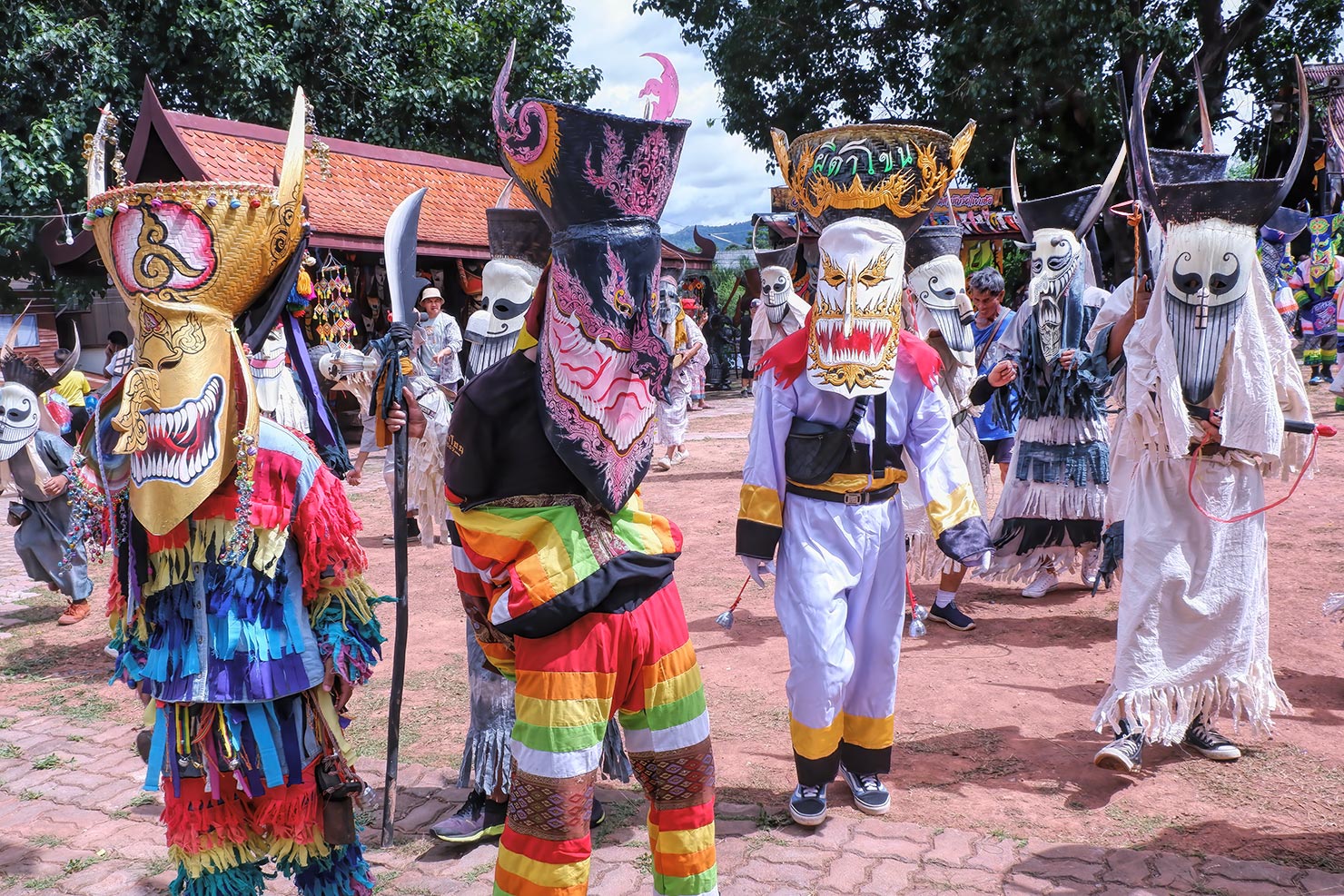
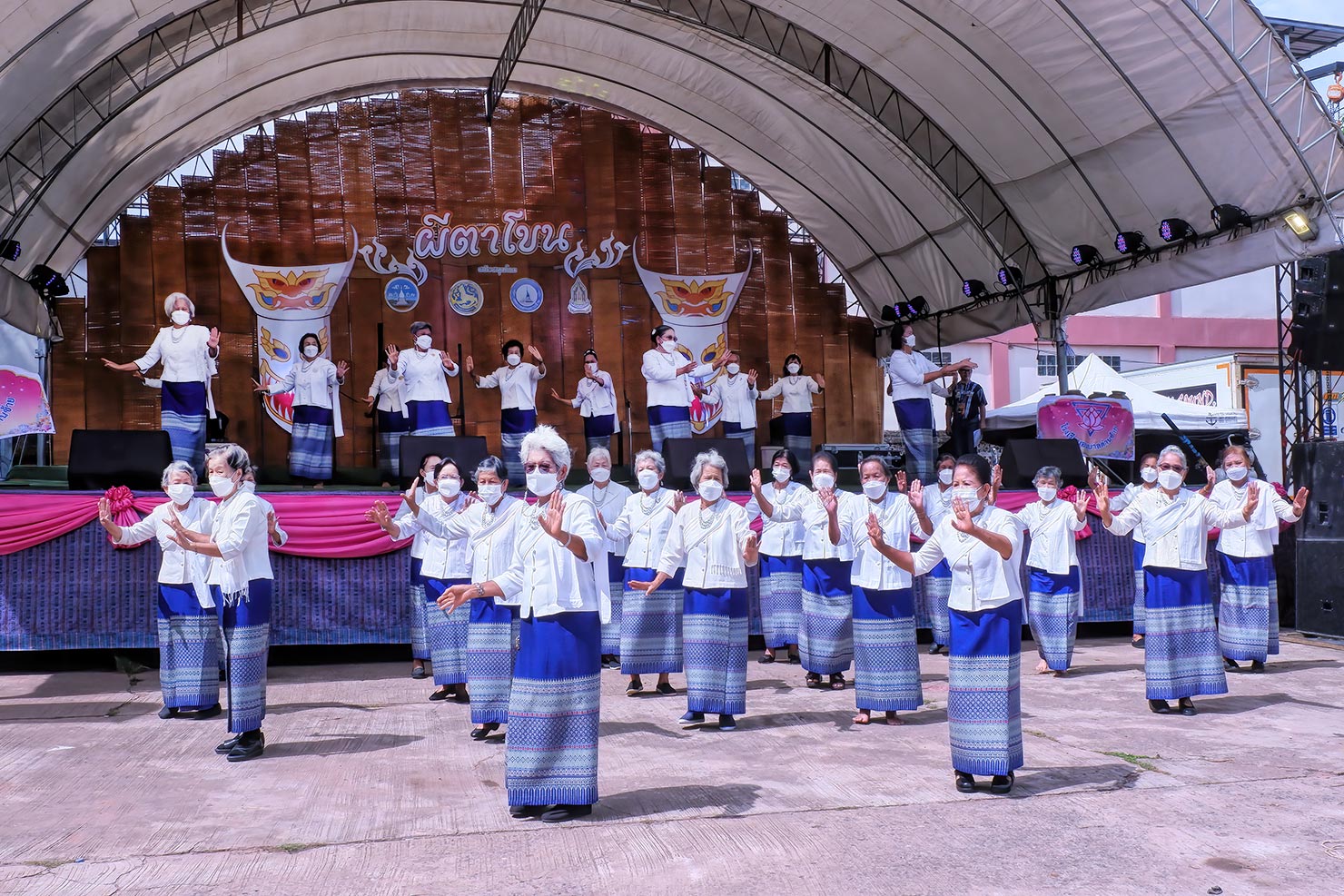
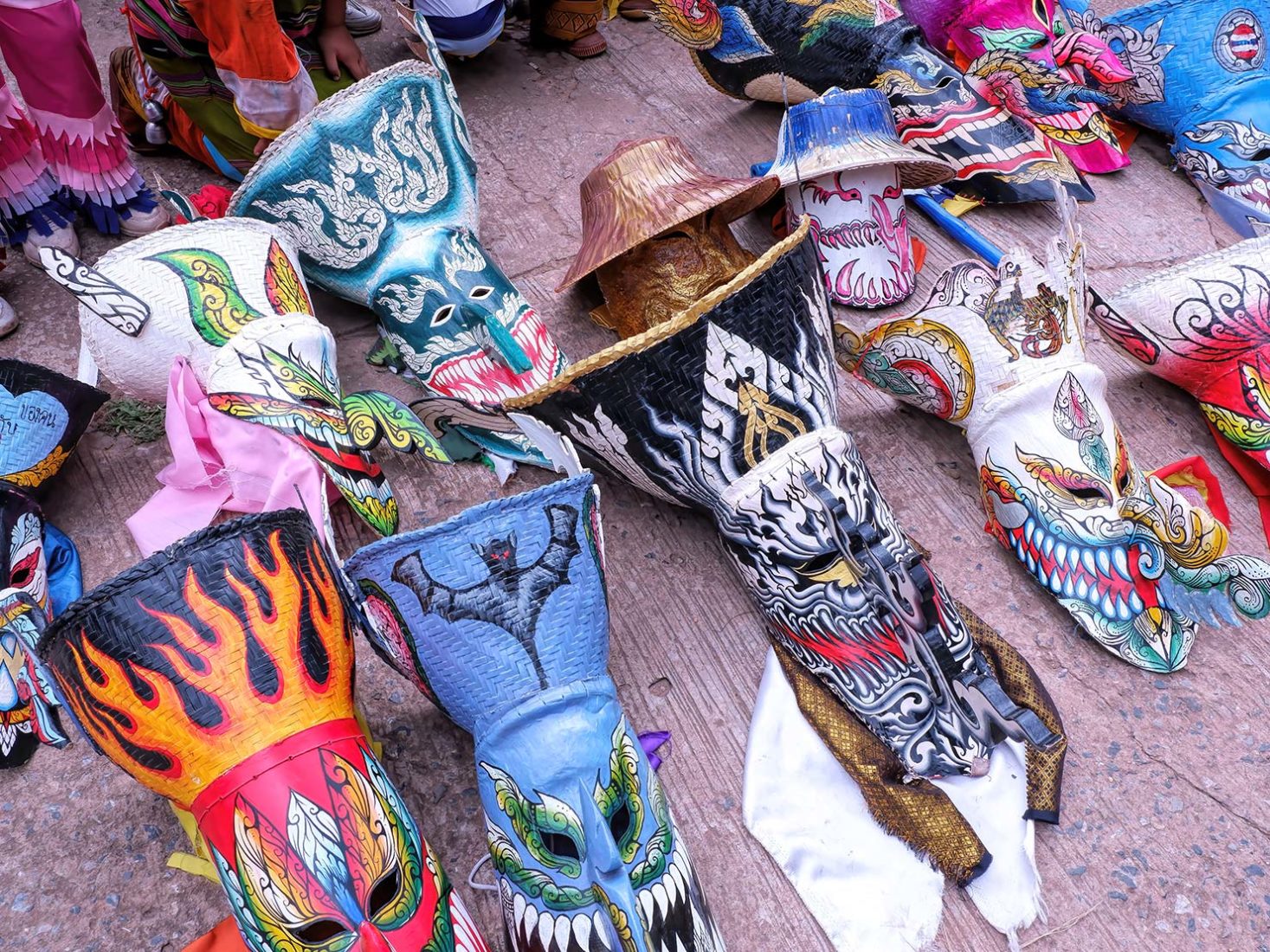
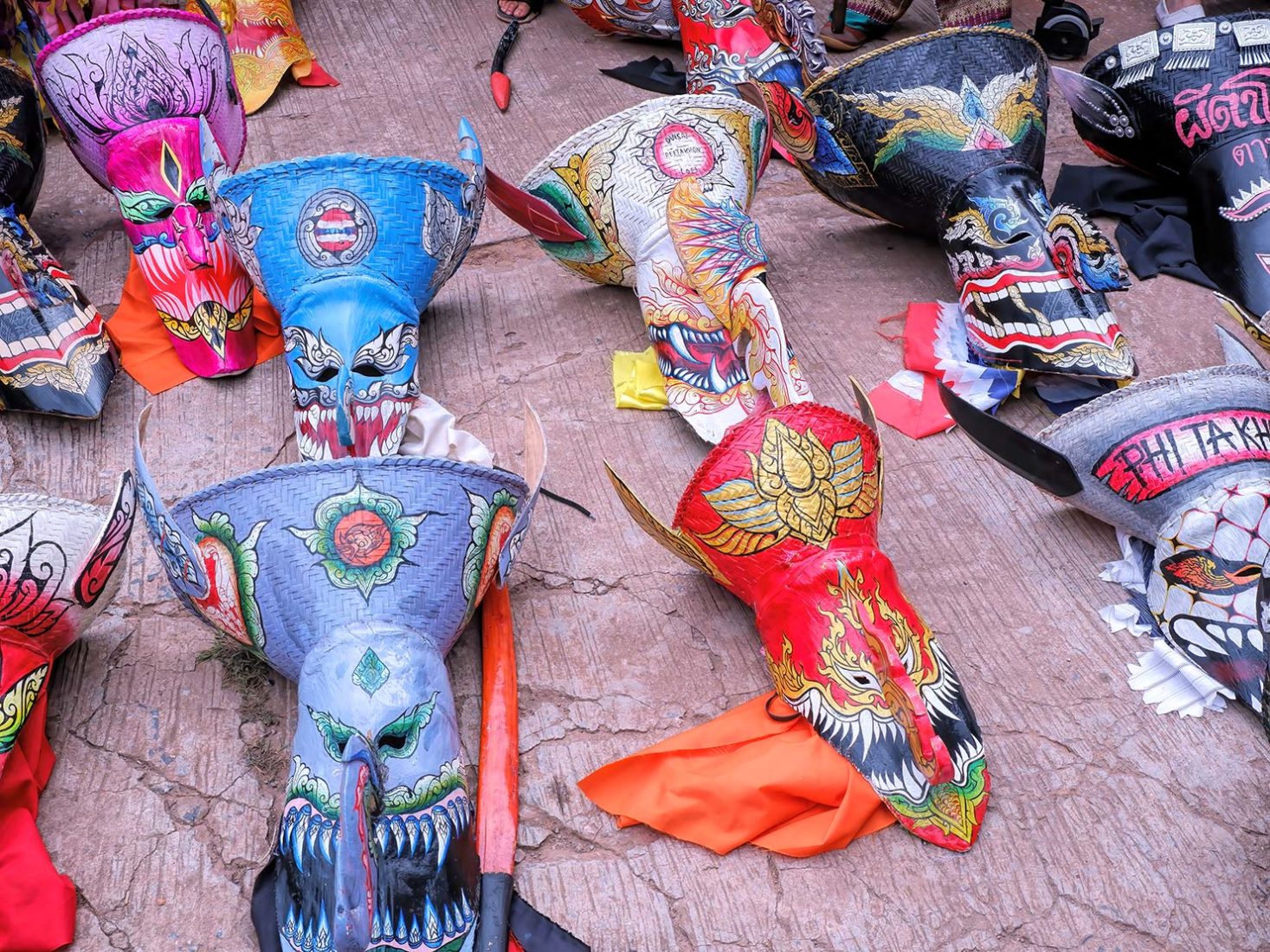
Prince Vessandorn was the incarnation of the Lord Buddha prior to the most resent reincarnation of Buddha, whom we know as Gautama Siddartha. Though the angry subjects of the King had demanded he be punished, they grew alarmed by his long absence and feared he had perished. When the Prince finally reappeared, villagers were so overcome with emotion that they rushed into the streets to celebrate. Their cheers and laughter were so loud that they woke the dead. Pi tam khon – ghosts that follow people – came pouring out of the forest and joined the festivities to show their respect to Prince Vessandorn.
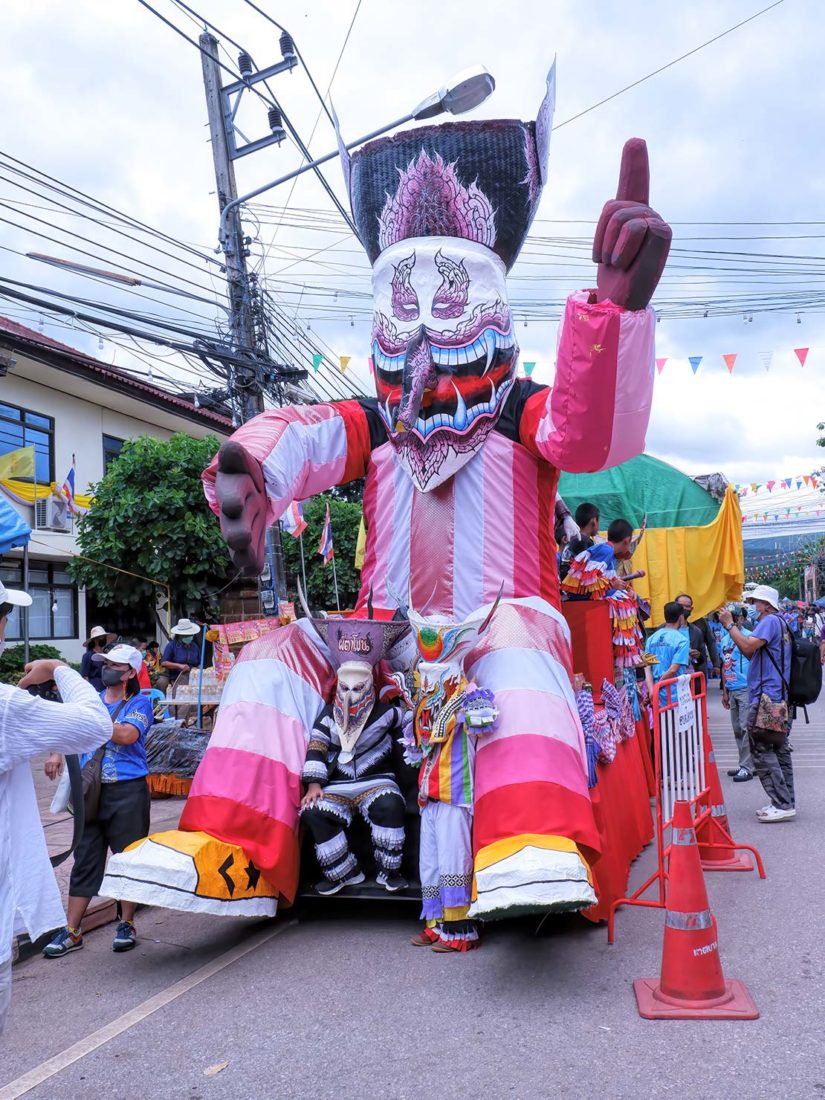
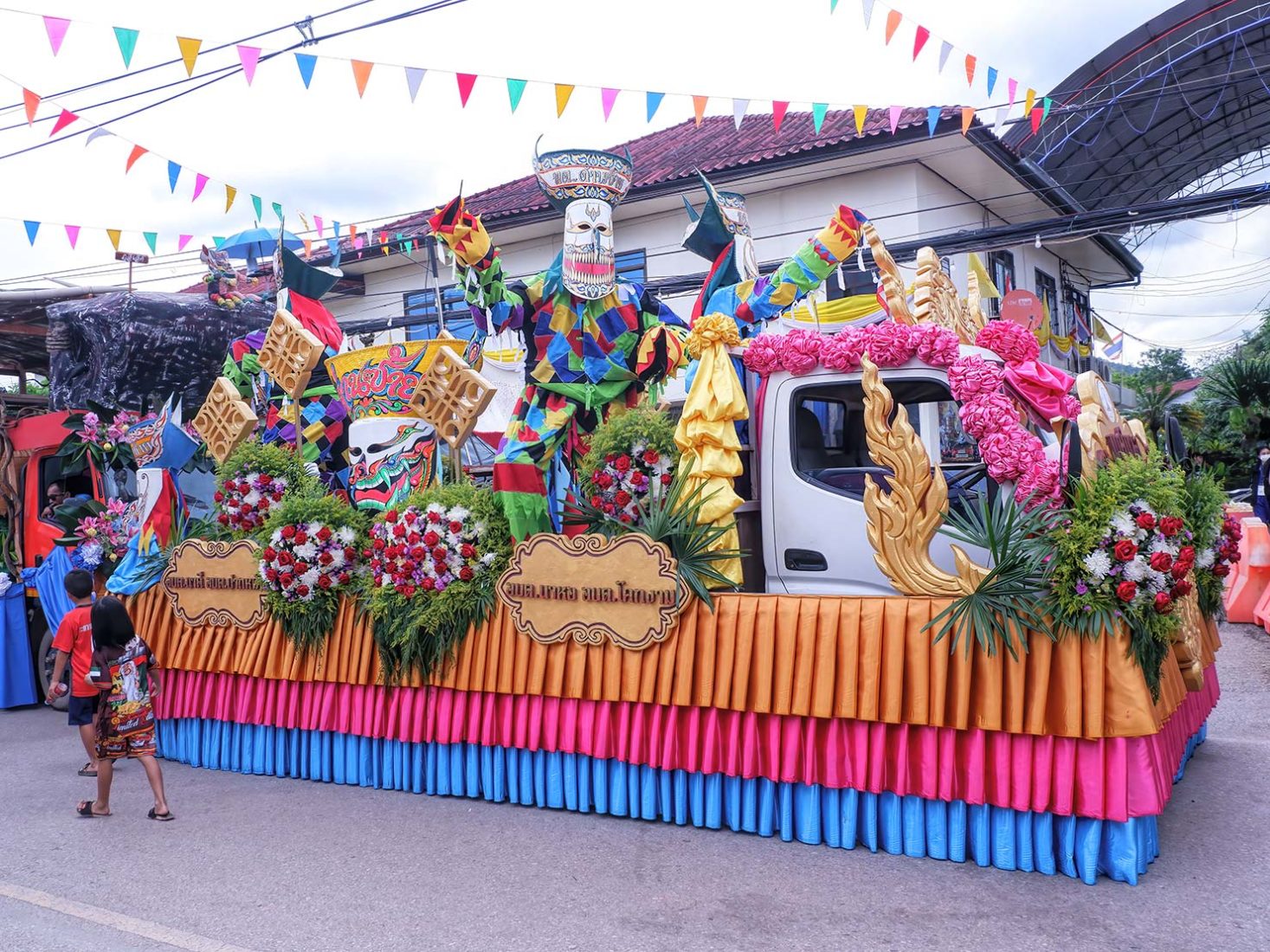
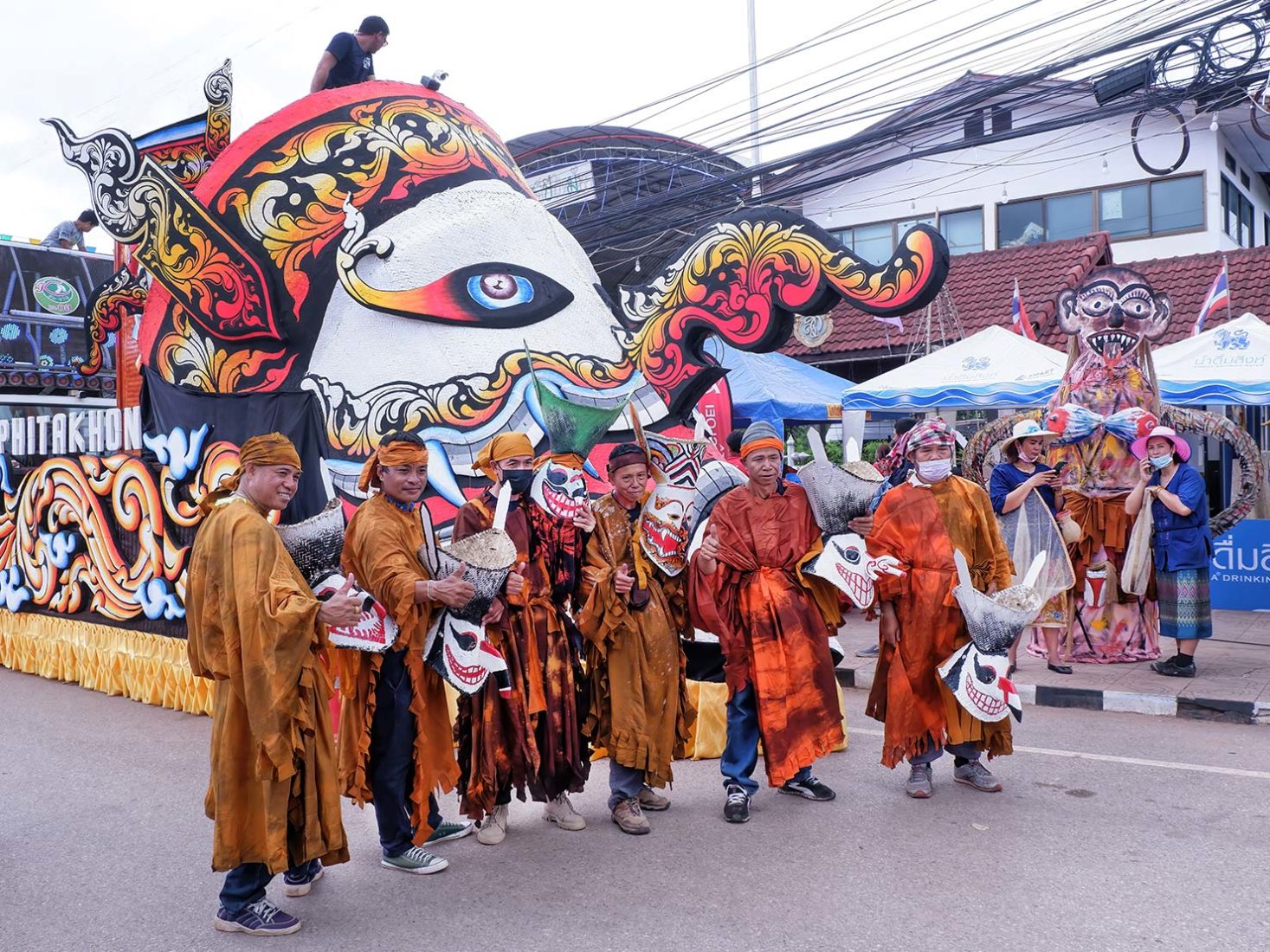
Although originally terrified by these ghostly spirits, the locals soon realized that all their bad luck had vanished after the spirits returned to their forest home. Over time, phi tam khon became phi ta khon and the festivities became associated with fertility and abundance, for both crops and people. Today, locals in the village of Dan Sai celebrate the Phi each year on the anniversary of their first appearance by dressing up in fierce costumes and parading through the streets.
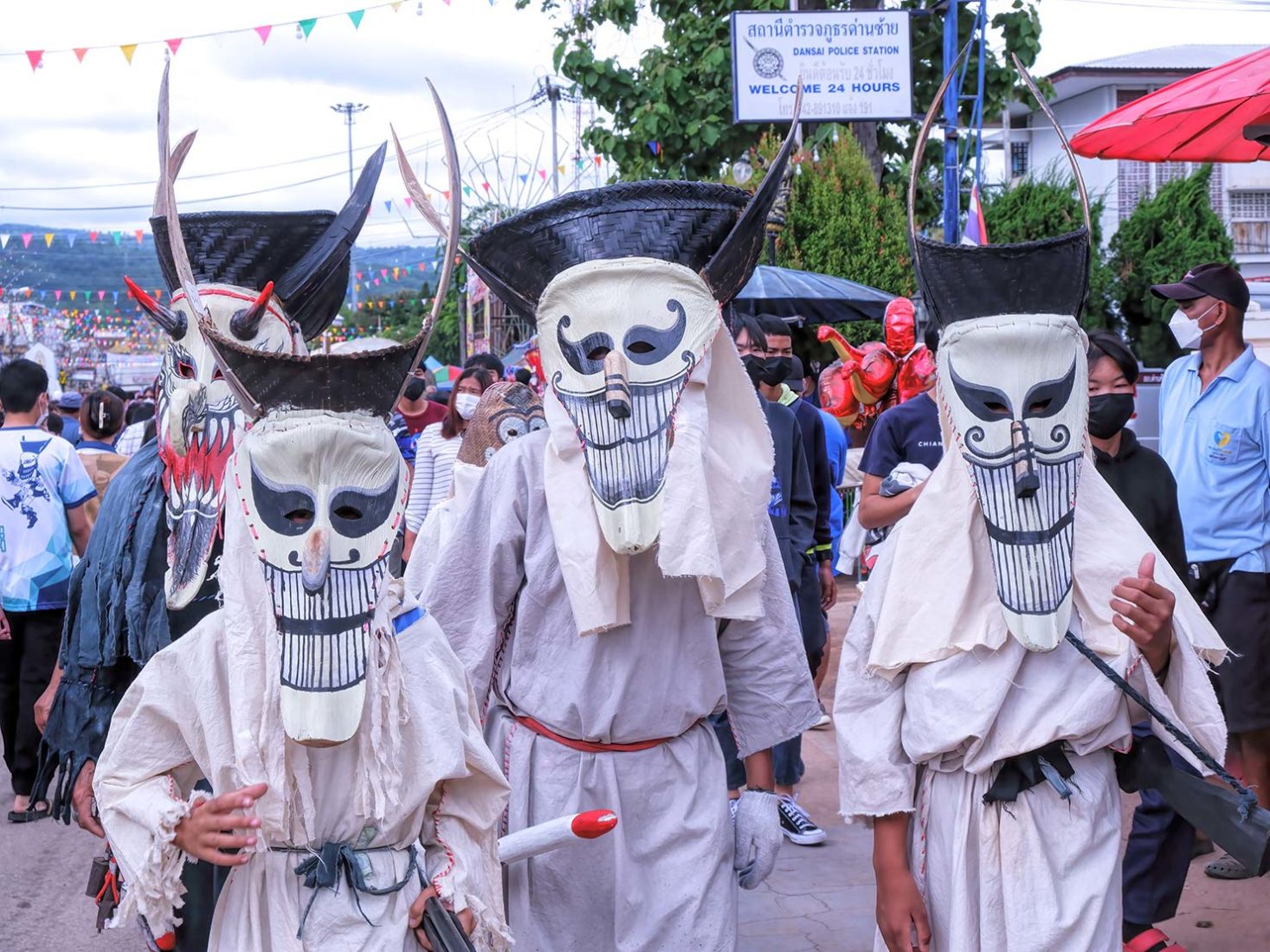
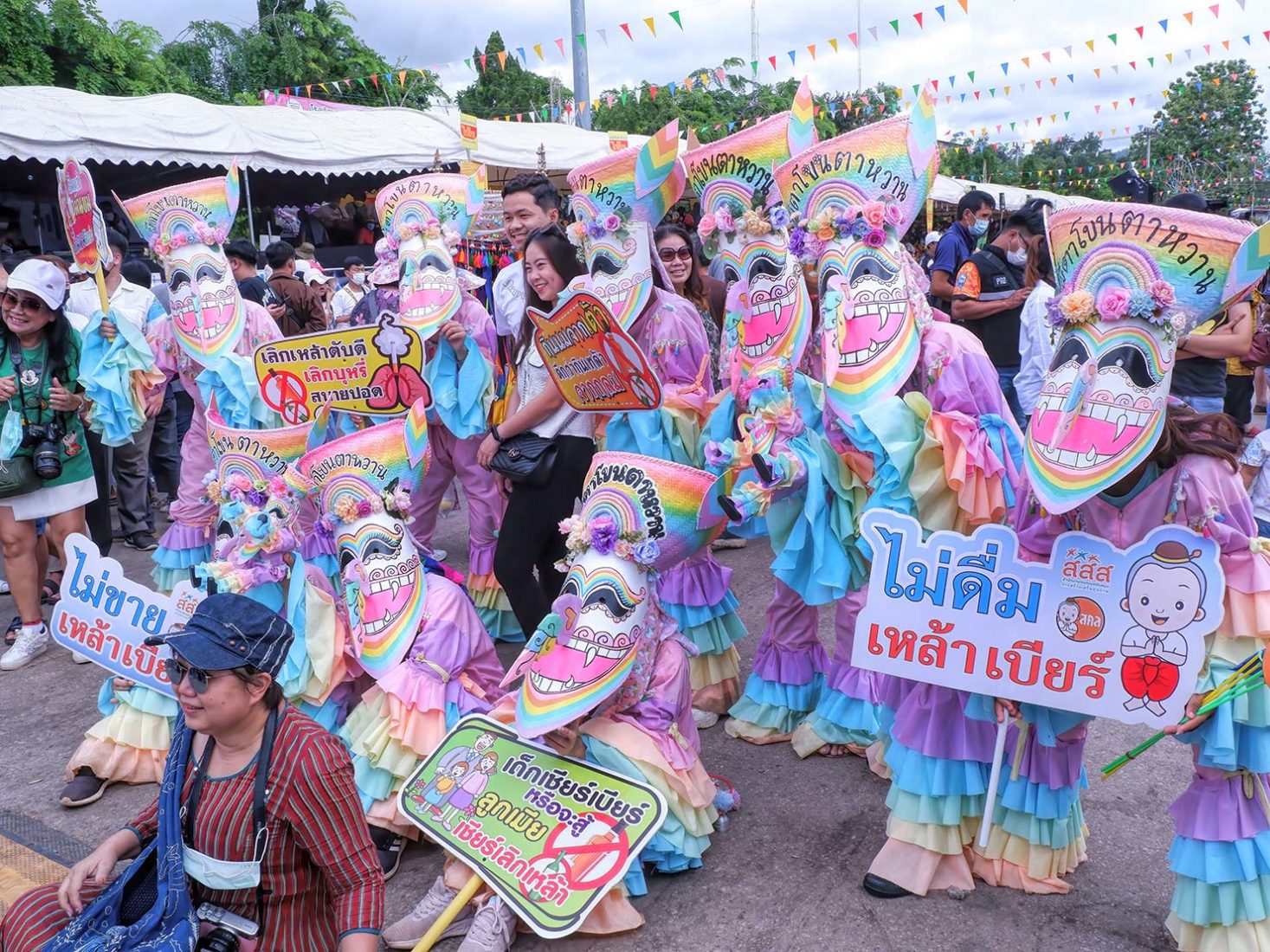

Costumed figures come in two varieties. Phi Ta Khon Yai (large Phi Ta Khon) are giant naked effigies that display erect wooden penises, oversize balls, and breasts. The genitalia are a symbol of fertility rather than obscenity, thus the Phi ta Khon Yai always lead the parade. People who play Phi Ta Khon Yais must receive permission from a ghost to do so. They perform the duty every year for at least three years. At the end of the festival the Phi Ta Khon Yai are thrown into the Man River to ensure that all misery and bad luck float away. Phi Ta Khon Lek (small Phi Ta Khon) refers to people who dress up as ghosts and join the parade.
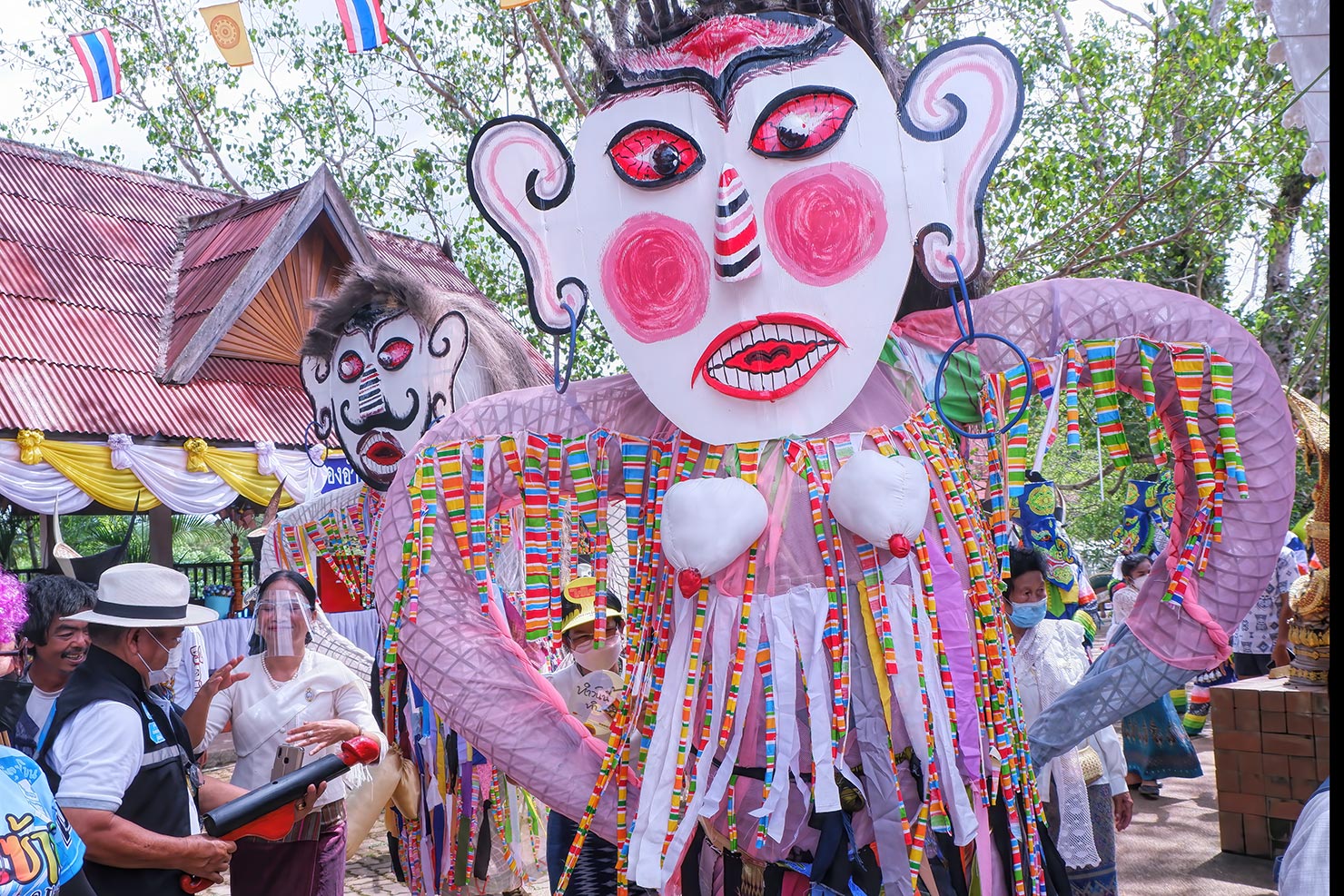
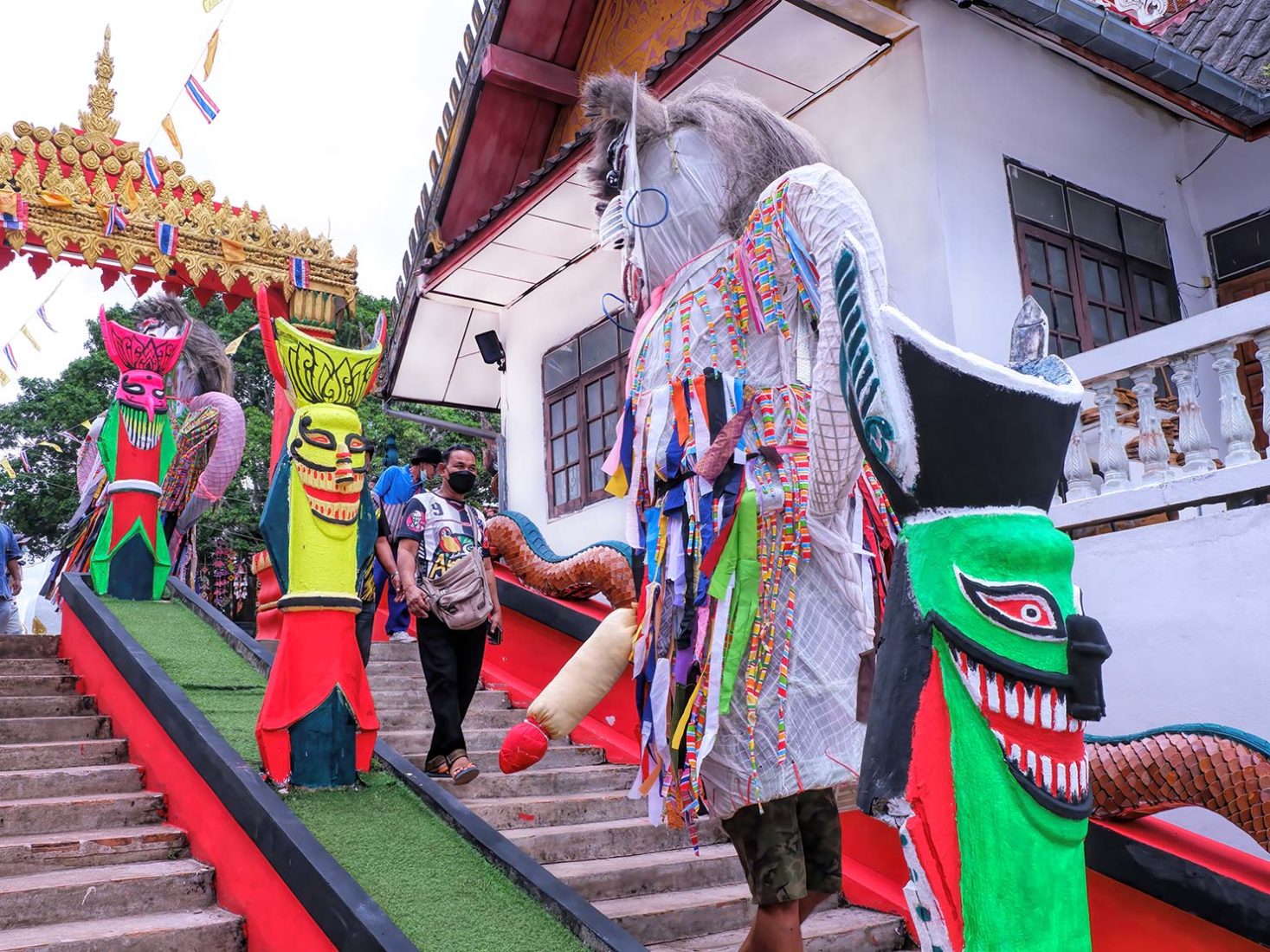
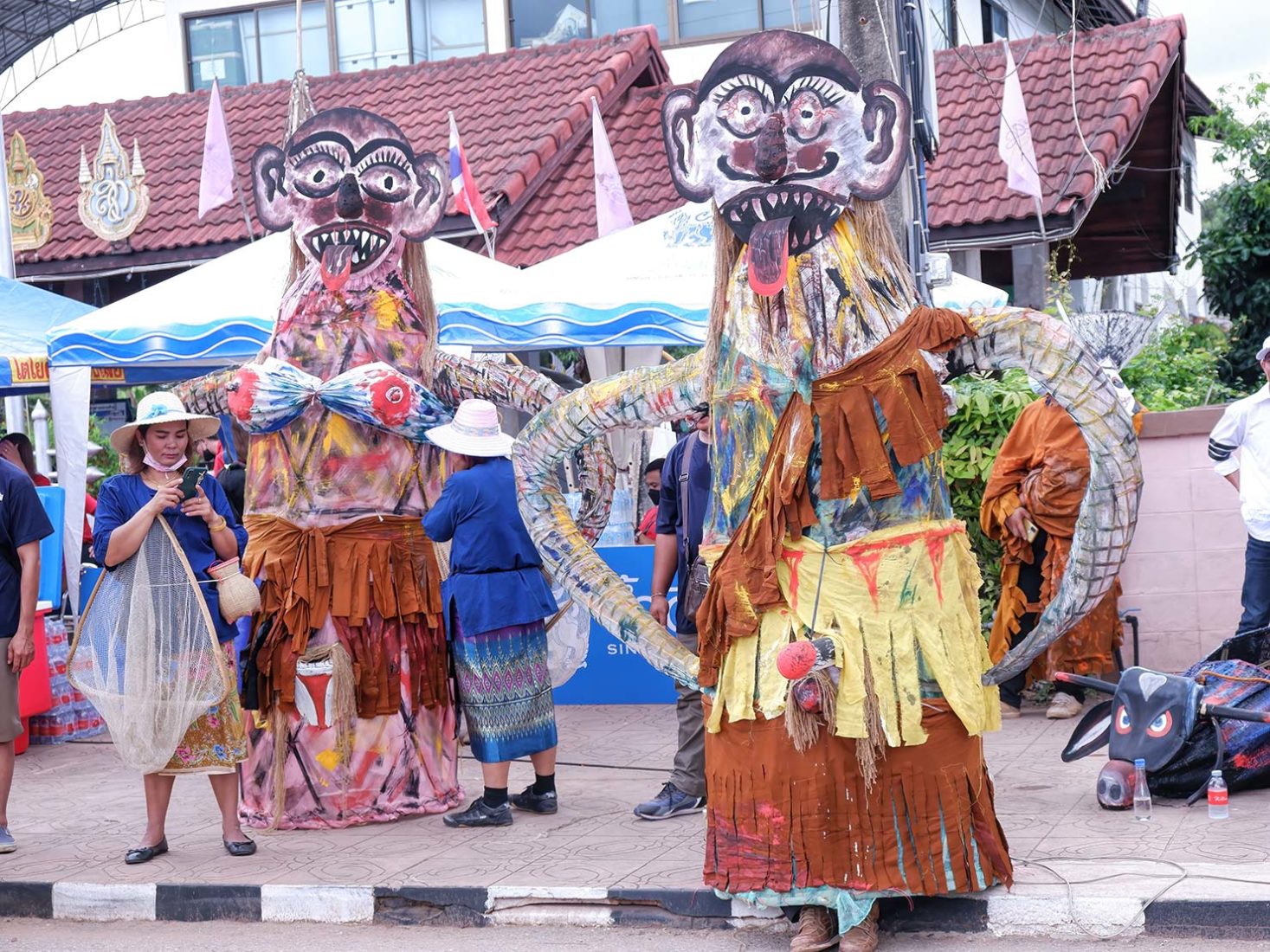
Bun Luang/Phi ta Khon is typically scheduled for the first weekend after the sixth full moon of the year, which usually falls in the month of June. But the exact date is chosen by the great local ancestral spirit Chao Saen Muang and conveyed through a medium called Chao Por Guan. Sometimes, the spirit doesn’t cooperate, refusing to reveal the date of the event until the last moment. As a result, few foreigners even know about the festival, much less attend.

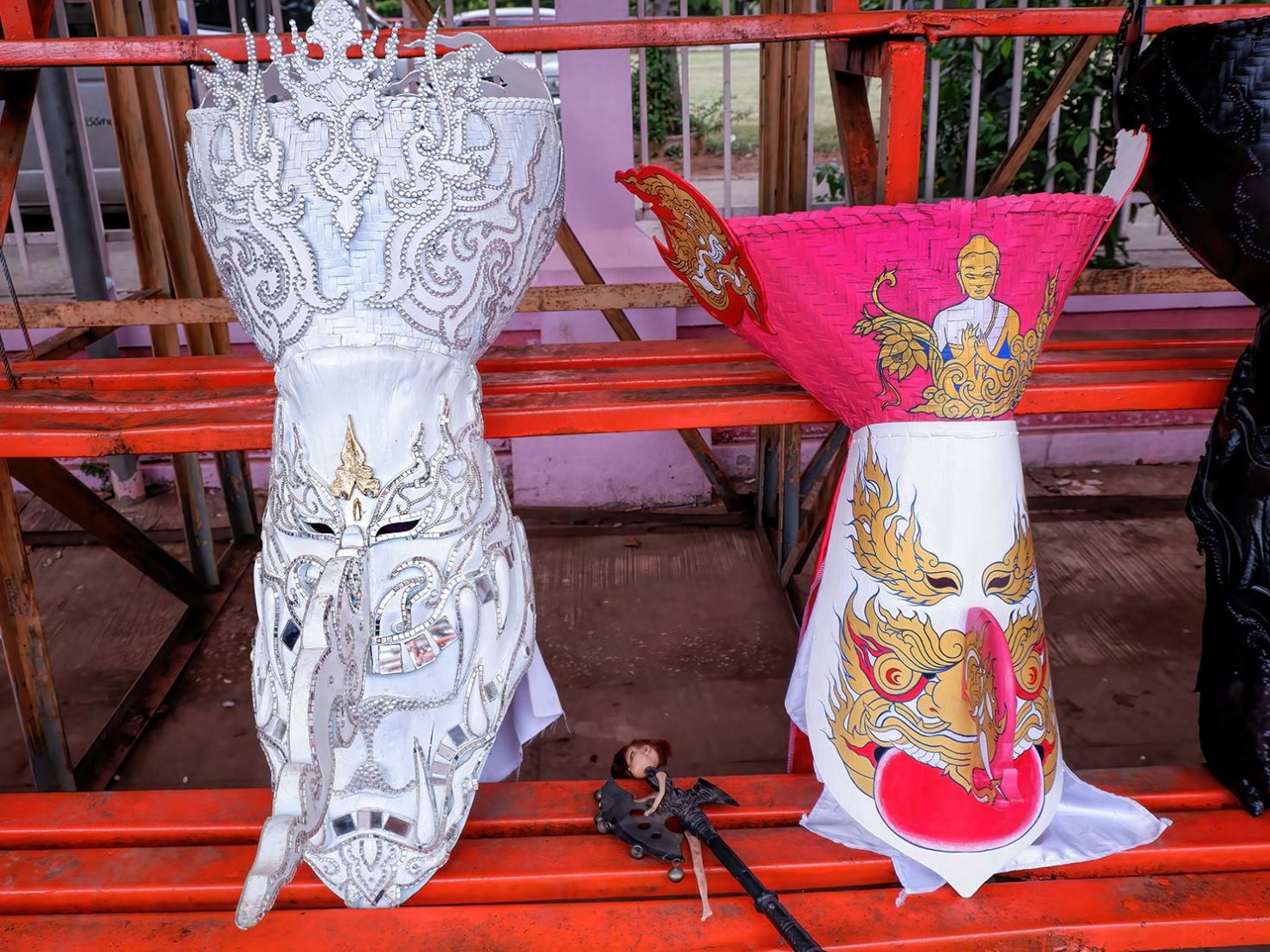
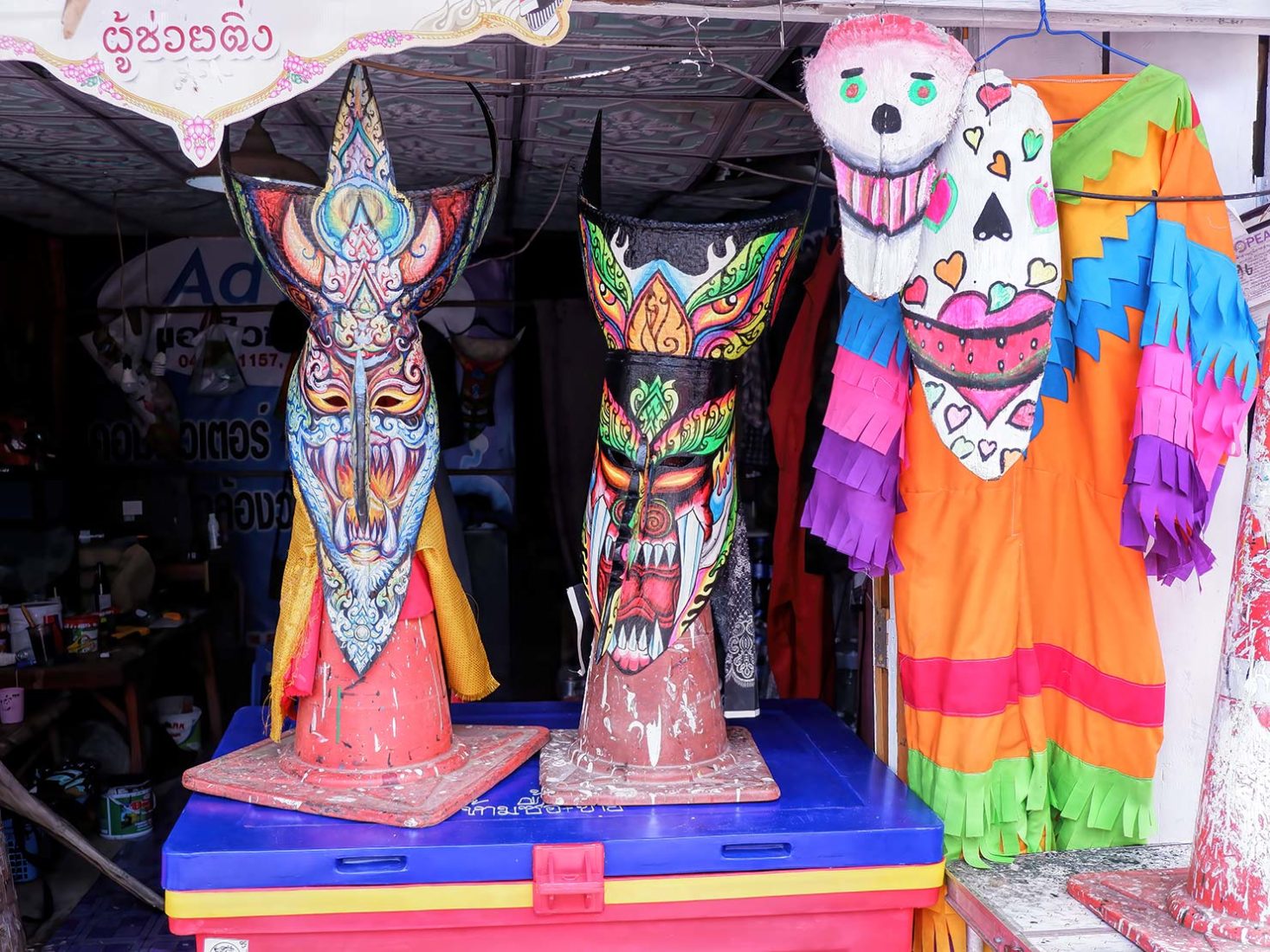
This year, the spirit seemed reluctant to decide. Due to Covid restrictions, the event had been cancelled in 2020 and 2021. Would it be allowed in 2022? The town held its collective breath as the government decided. Finally, the edict came down. Phi ta Khon was on! But by the time the news was translated into English, every single hotel room in Dan Sai had been booked by Thais who had the benefit of being able to read the news in Thai. Still, I wasn’t about to be deterred. I finally found a cabin for rent at a Farm Stay in nearby Phu Ruea.
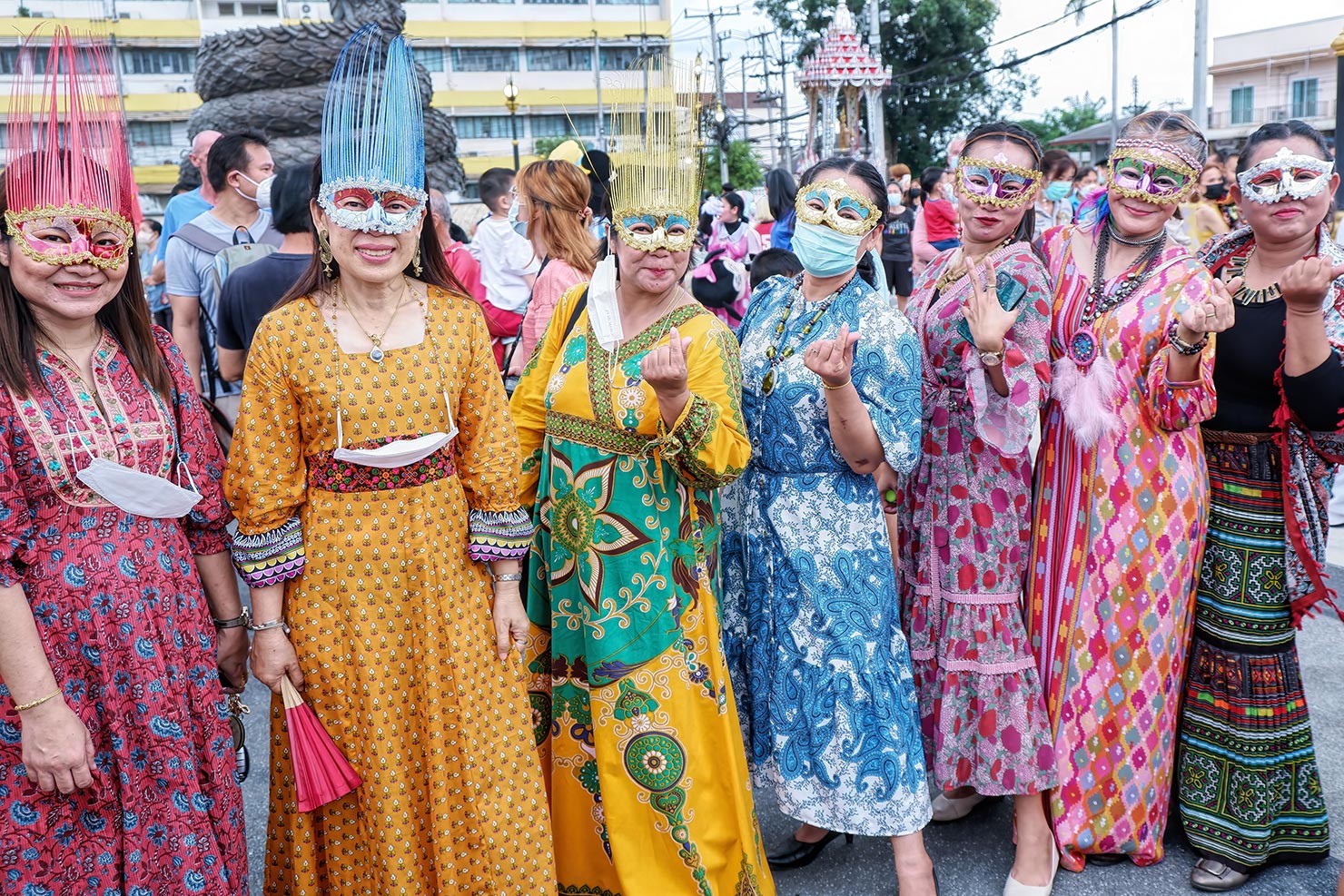
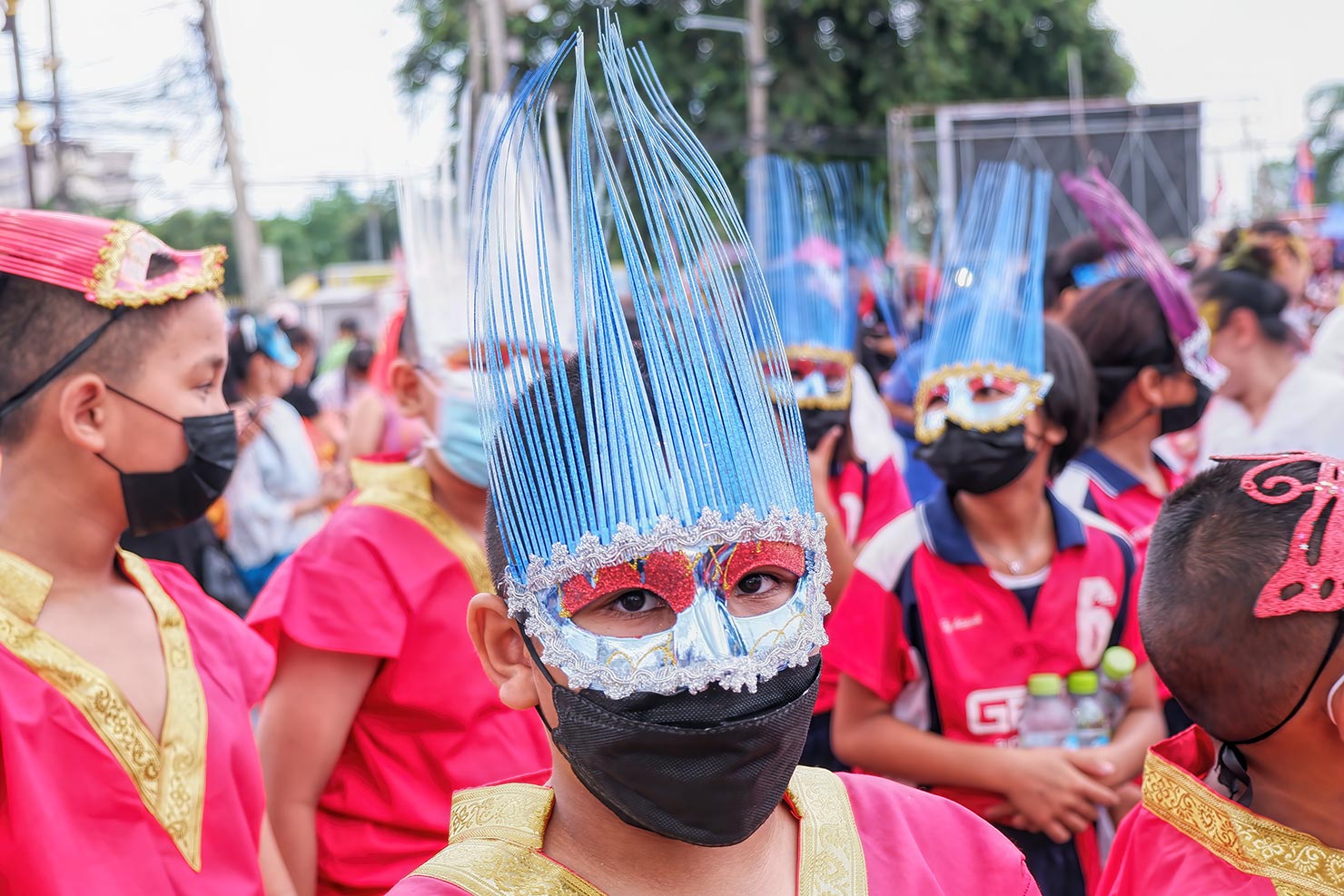

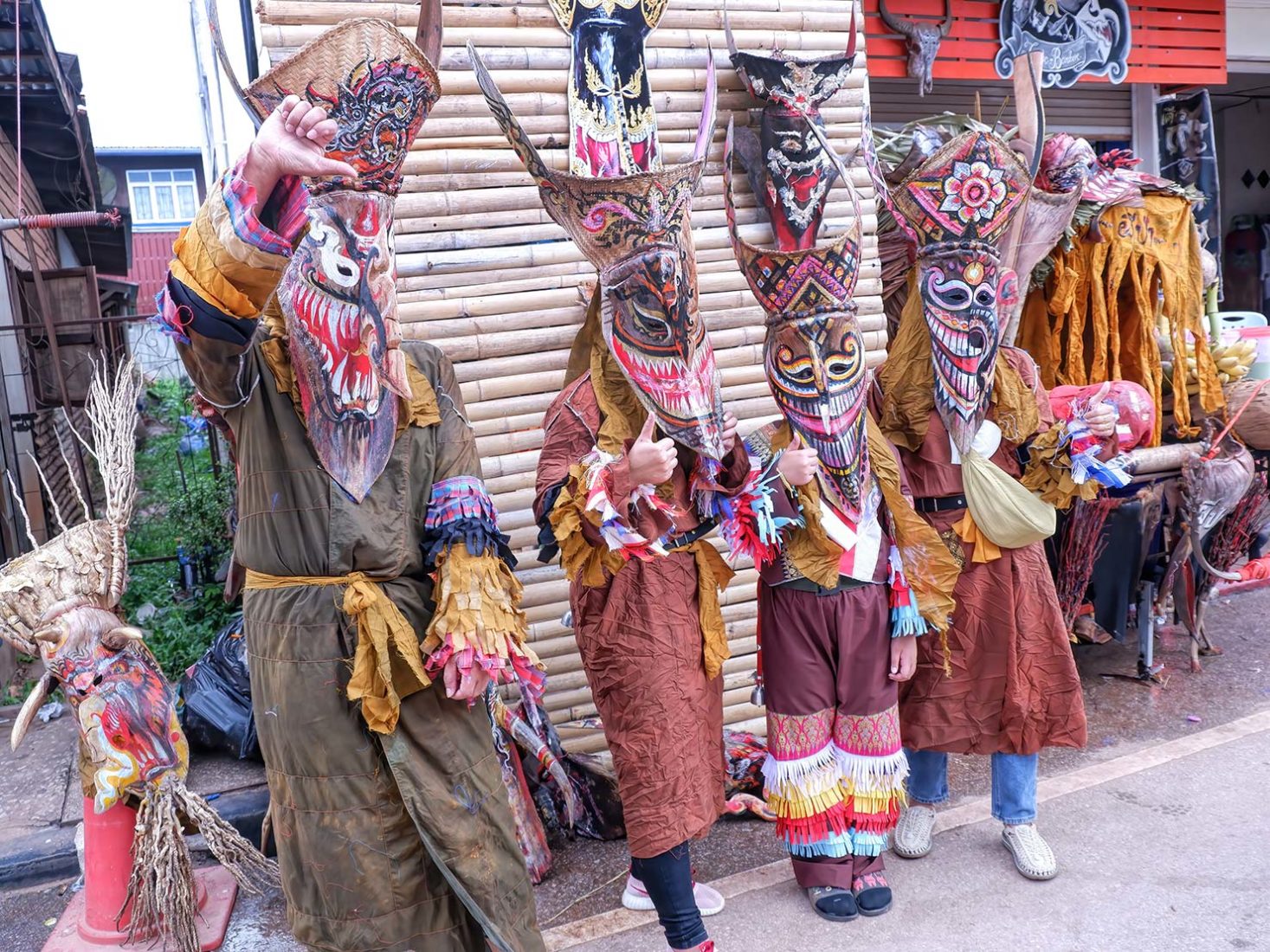
The opening ceremony was held in the main square of the provincial capital of Loei. On day two, festivities moved to the tiny farming community of Dan Sai, where most Phi ta Khon events are held. I arrived early enough to avoid the massive traffic jam and joined the parade heading to Wat Phon Chai, where the costumed characters circumambulated around the temple three times in a counter-clockwise direction. In addition to attracting participants from every Tambon (district) in the province, groups had traveled from as far away as Laos, Cambodia, and even China, to participate.
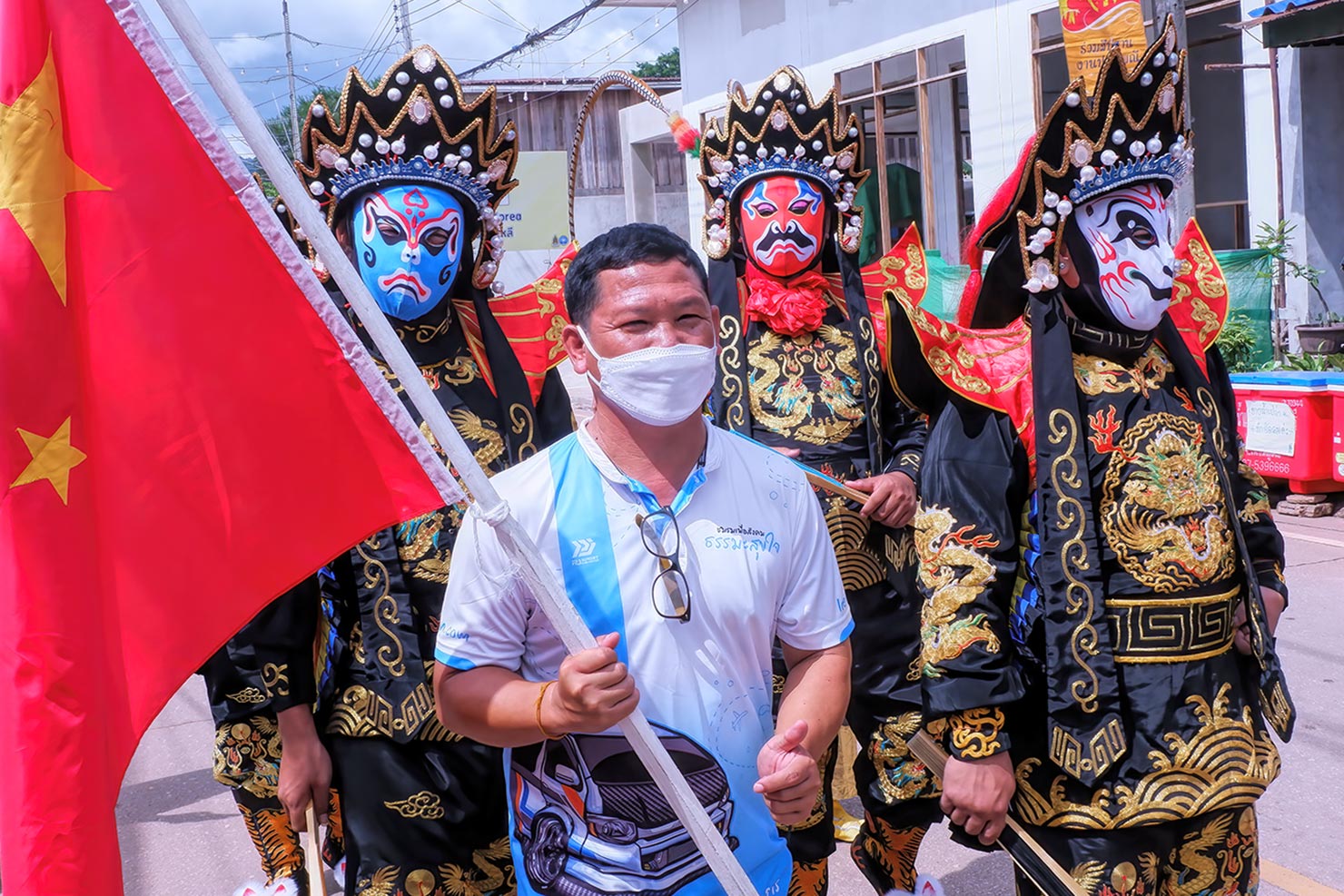

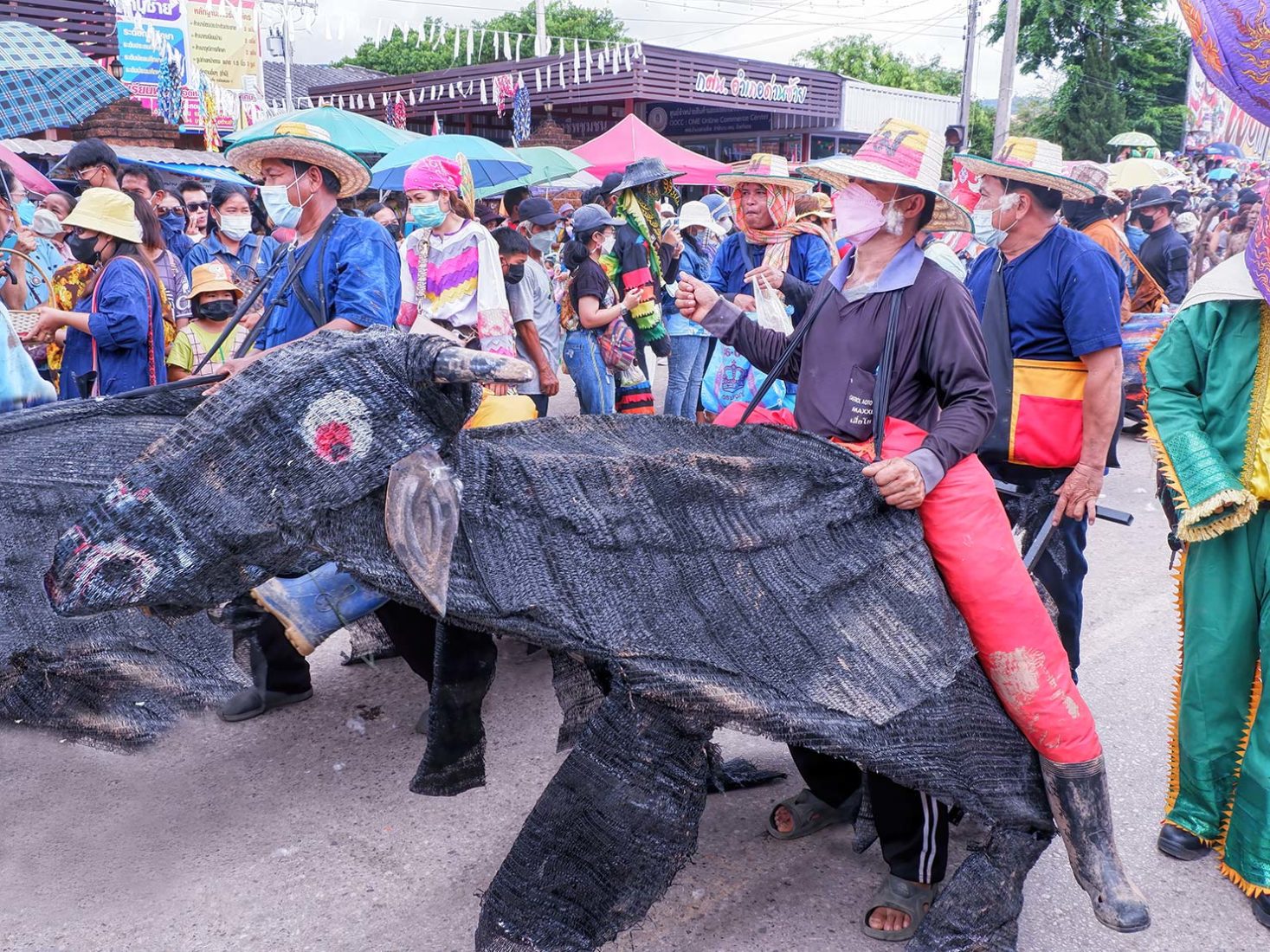

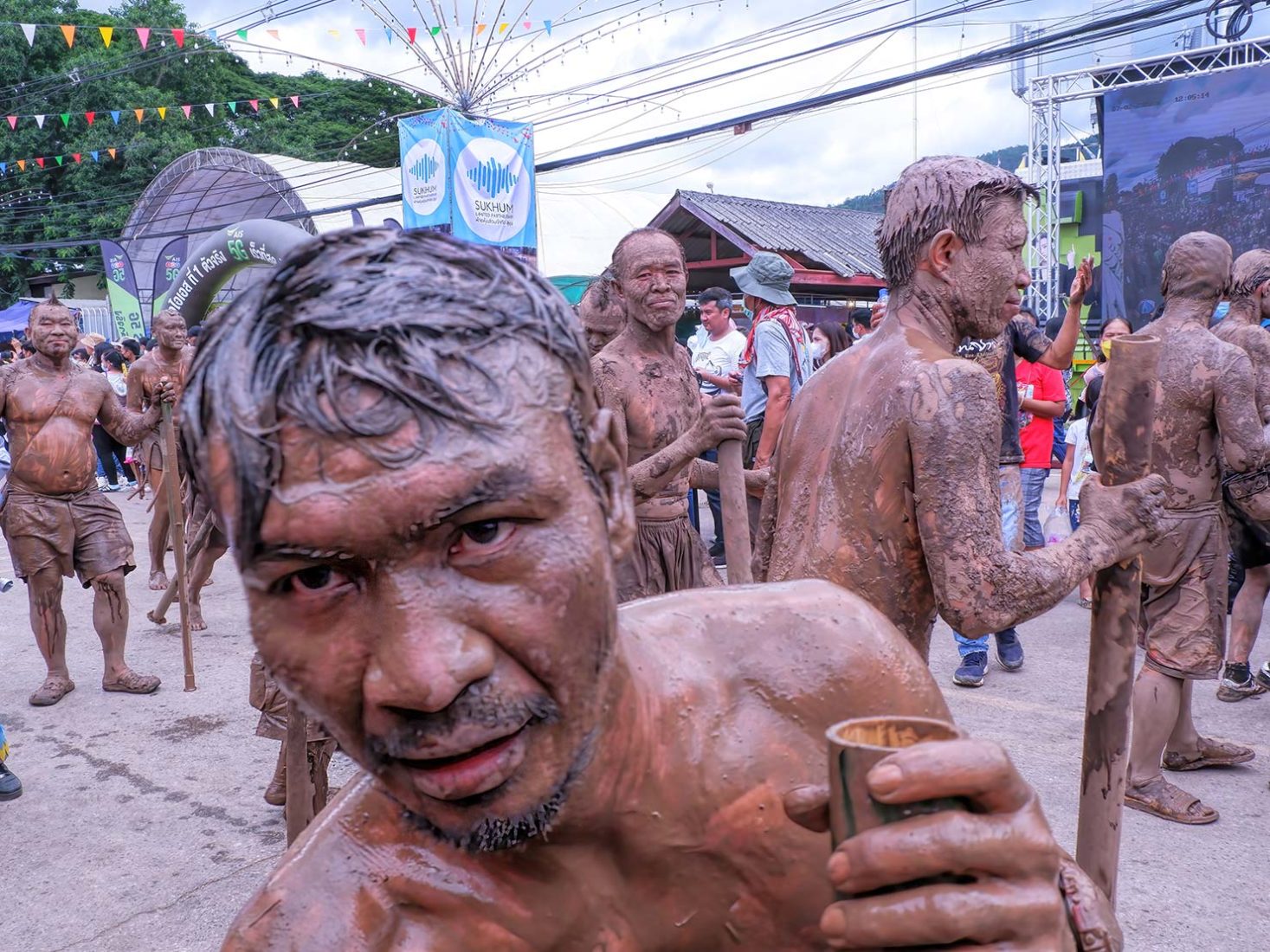
Throughout the morning, representatives from the Tambons performed cultural dances on a stage set up at the Wat. Meanwhile, thousands upon thousands of visitors streamed into the main street to await the main event, a miles-long parade featuring floats, costumed characters, and groups dressed in traditional attire from every Tambon. The crowds were massive by the time I made it to the main viewing area. Rather than try to see over a sea of bodies, I wrangled my way to the front of the crowd and simply joined the parade, walking backwards to take photos of the various groups.
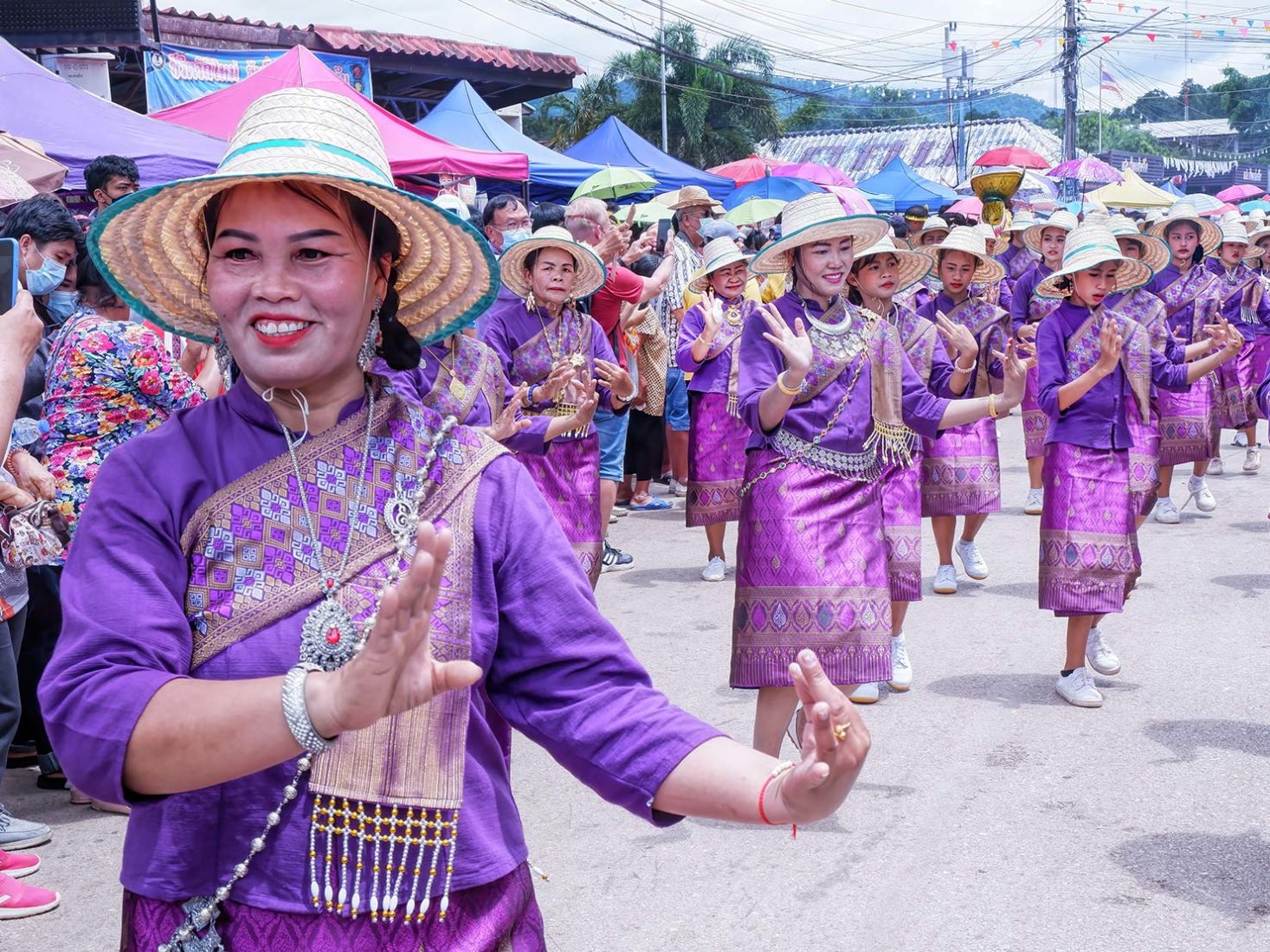
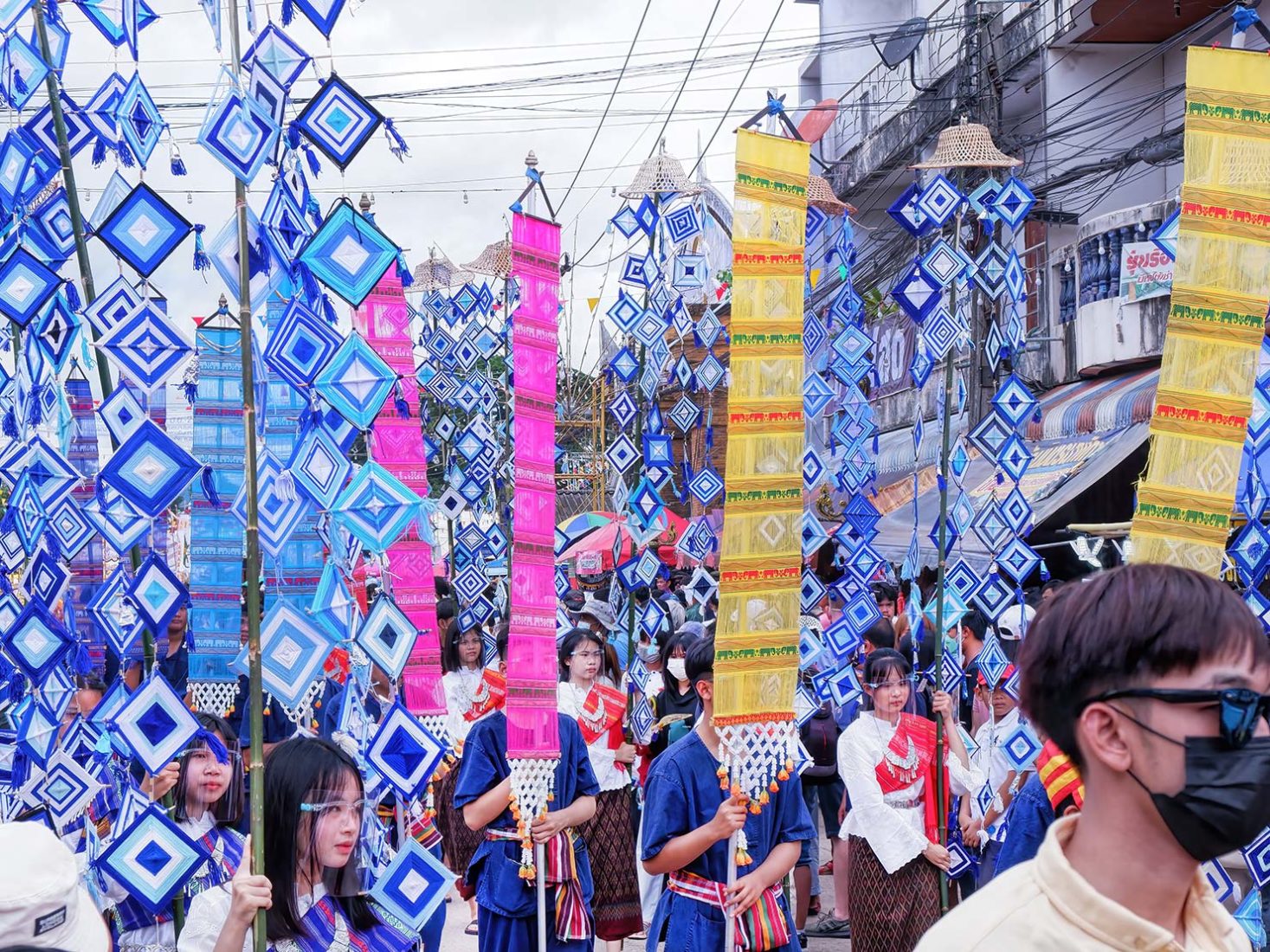
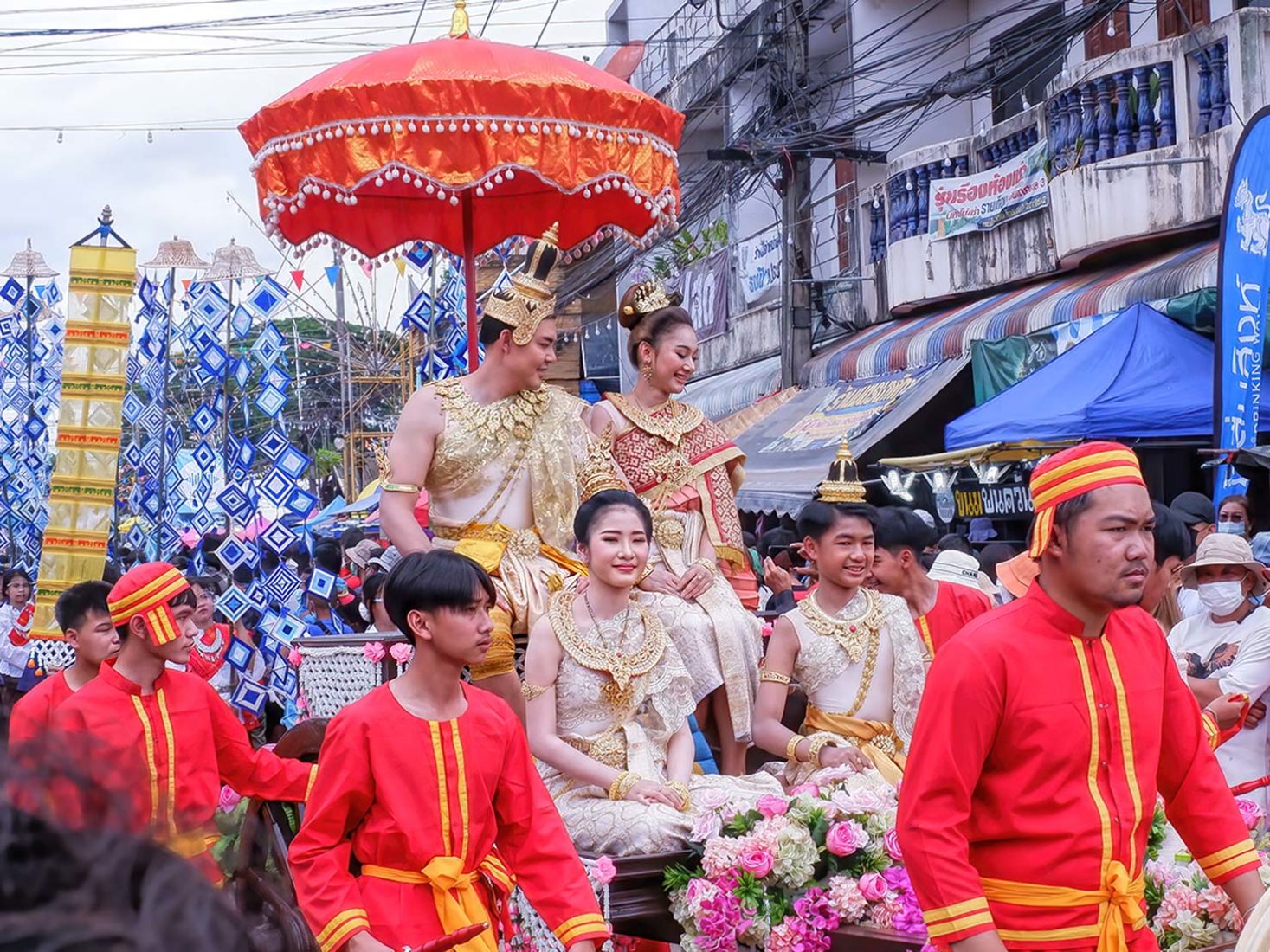
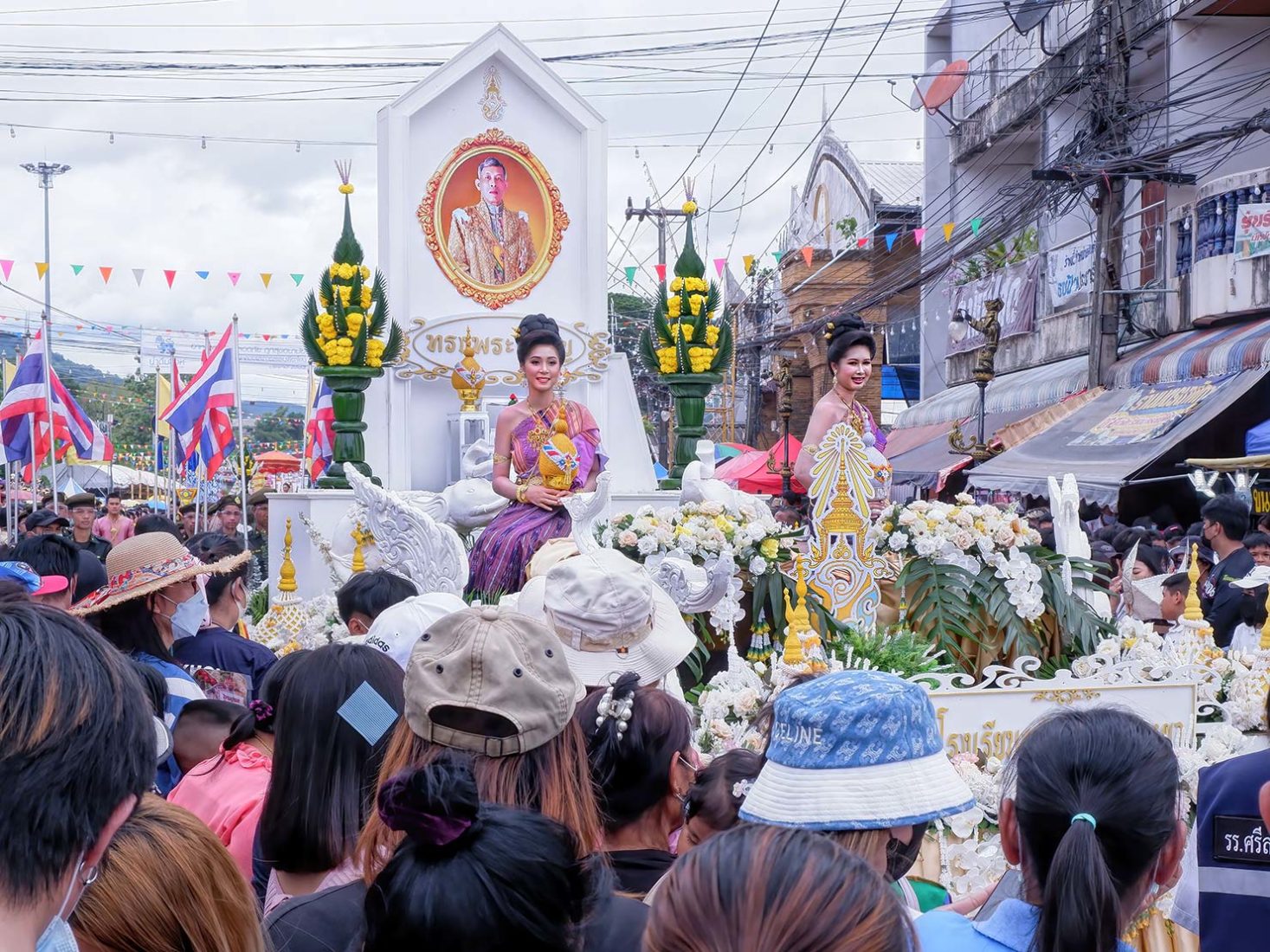

Following the parade, rain-making rockets rockets were launched into the sky to appease Phaya Thaen, the main god of the Isaan region where Loei Province is located. A happy Phaya Thaen sends rain that ensures fertile crops and the well-being of the local folks. I had planned to attend the rocket launching ceremony, during which the medium Chao Por Guan sits atop the largest rocket as it is carried to the launching site, but the massive crowds had exhausted me. Instead, I fled the hubbub for a popular Thai restaurant where my driver and I feasted for less than $10.




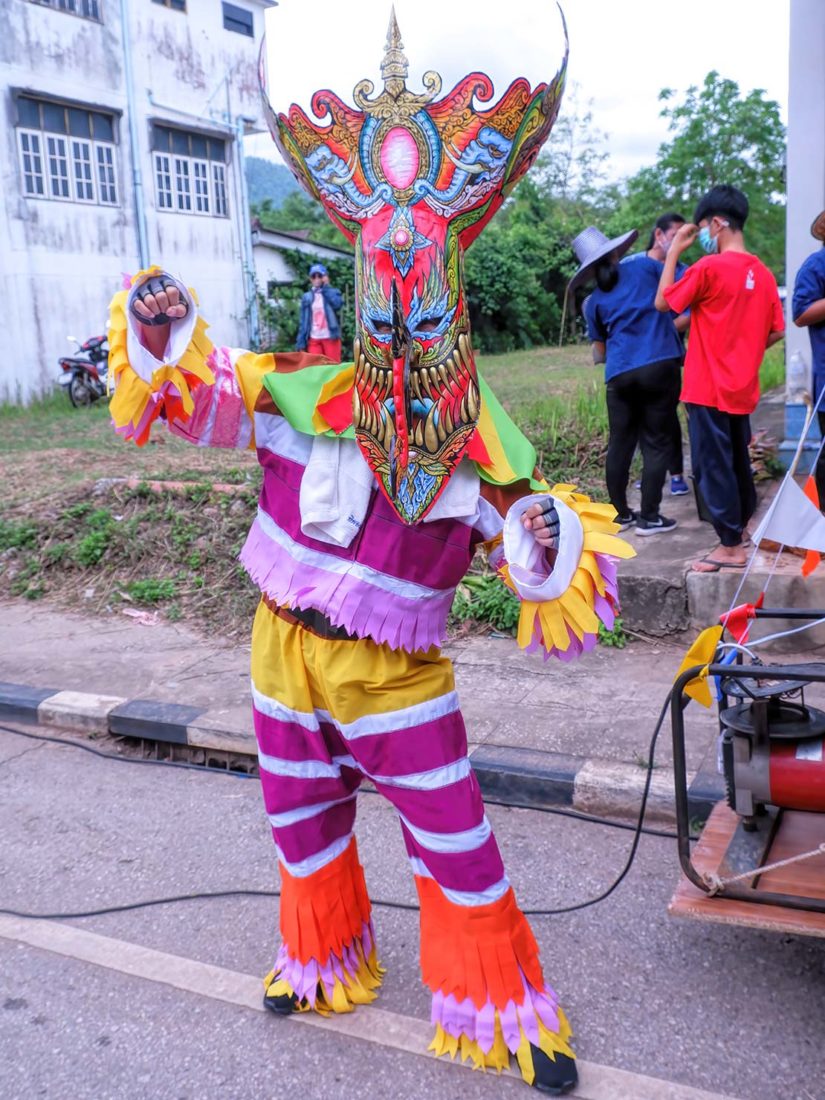
On the third and final day of Phi ta Khon, locals flock to the temples to hear monks give sermons about the ten lives of Buddha. Those who attend are said to earn merit, which in turn helps them to be released from the Wheel of Samsara (the Wheel of Suffering). In other words, they have a greater chance that they will not have to suffer rebirth after they die. Since my Thai is not (yet) good enough to understand the sermons thoroughly, I skipped day three. We headed out early in the morning for our eight-hour drive back to my home in Chiang Mai, stopping only at roadside stands along the way to stock up on the delicious Dragon Fruits that are grown in Loei Province.
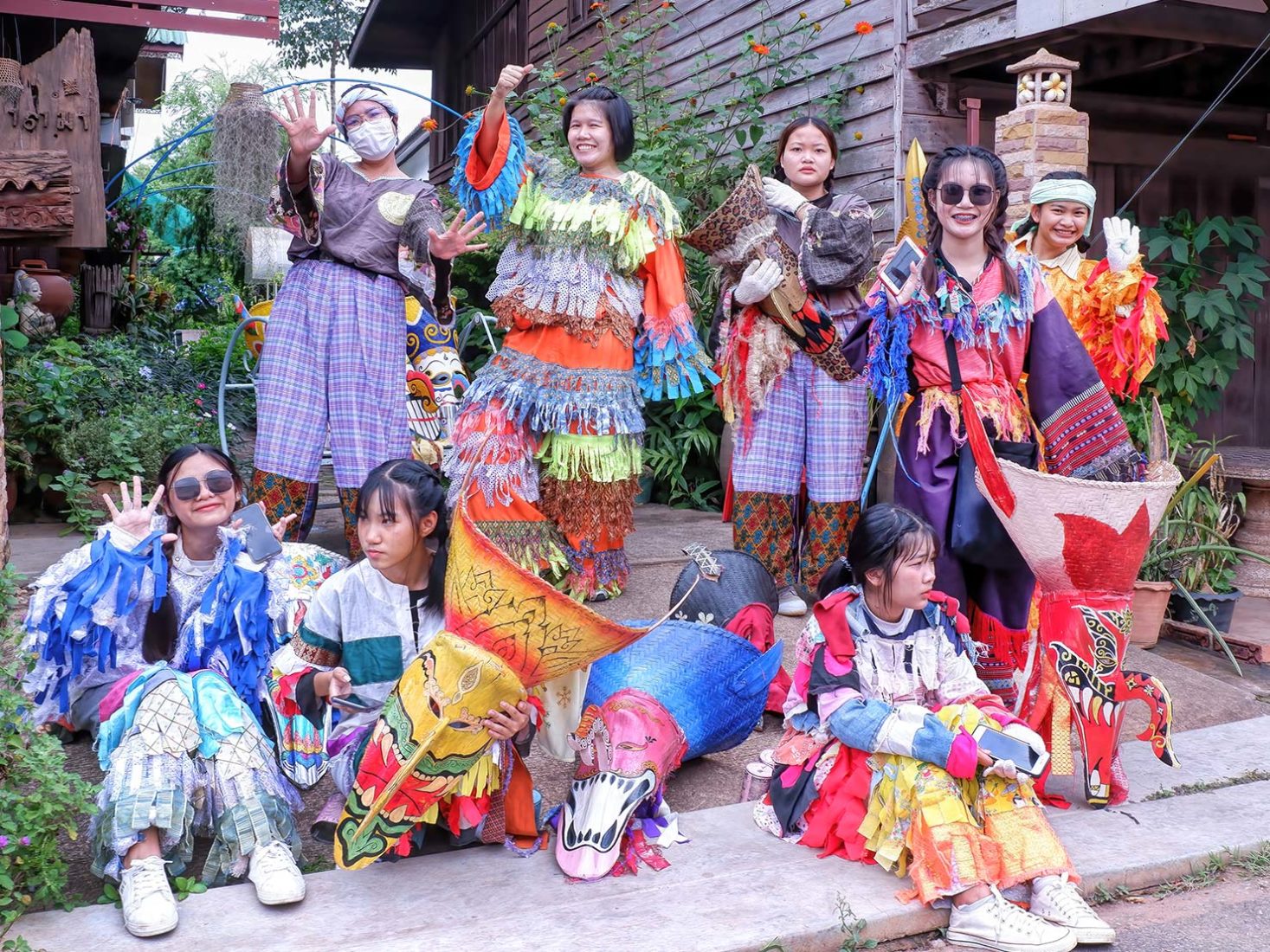
To learn more about the history and significance of the Phi ta Khon celebration and rituals, this article published by the Princess Maha Chakri Sirindhorn Anthropology Centre is excellent.
